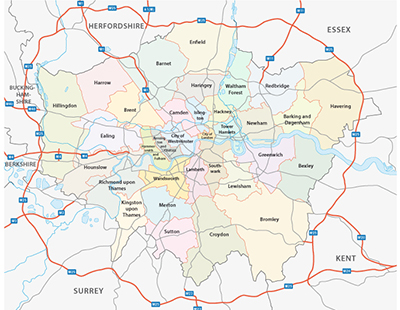“Against an increasingly difficult economic backdrop, prime London rental growth has reached new highs. Intense competition to find somewhere to live in the capital – especially during a period of significant student demand – is outweighing the higher cost of living and concern over the UK economy, particularly given the acute shortage of stock” comments Jessica Tomlinson, research analyst at Savills.
“However, the current rental price growth trajectory cannot be sustained. With the sales market slowing, we would expect to see more accidental landlords enter the market, whilst post-pandemic pent up demand should also start to normalise towards the back end of the year.”
The North West is now the top performing region of prime London, and growth is catching up with that seen in the South West since the start of the pandemic). This is largely driven by growth in Maida Vale and Little Venice, Primrose Hill and St Johns Wood, which combined averaged 6.1 per cent growth over the past three months.
Rental prices in prime central London also continue to grow at pace, up 3.4 per cent over the past three months, which is marginally lower than the previous quarter, taking annual growth to 13.7 per cent. Rental growth has now reached 4.1 per cent over a five-year period. This is the first time five-year growth has reached positive territory since March 2016.
However, the market has started come off the boil in the commuter belt, remaining strongest in locations closest to London.
While annual growth remains high at 7.2 per cent, quarterly growth has slipped down to 0.9 per cent for the first time since December 2020.
Savills says the supply/demand imbalance has started to ease, with more than half of its agents expecting to see more stock come onto the market in the coming months and almost half stating that tenants are reducing their budgets, up from just 23 per cent three months ago.
Cost of living has become more of a concern for tenants with a majority of agents in the commuter belt, with 79 per cent agreeing that the energy efficiency of a property has risen up the agenda over the past three months, in the run up to the energy price cap announcement.
“On the ground, there’s been an increase in prospective tenants inquiring on the cost of the outgoing tenants bills, before committing to a property, particularly for larger, often less efficient, homes in the commuter belt. As a result our index shows that smaller properties, including flats and semi-detached houses performed the best this quarter” explains Jane Cronwright Brown, head of lettings at Savills.
“In prime London, those looking to rent don’t have the luxury of choice right now, with stock remaining by far the biggest barrier. However, we can expect to see more concern for energy prices creep into all areas of the market as we head further into winter, while the freeze on energy prices will come as some relief to tenants who were worried about prices rising even further” she adds.
Prime London flats are now outperforming houses on both a quarterly and annual basis. And although houses have still grown the most since the start of the pandemic, the gap is starting to narrow significantly.
The agency says the majority of this shift can be accounted for by student demand, who returned to the capital in droves over the past quarter after deferring studies during the pandemic. When asked where demand was coming from, almost half of Savills agents ranked students top, in front of young professionals with corporate location demand either second or third in most agents’ league tables.













%20-%20IMAGE%20Client%20Accounting%20%E2%80%93%20what%20are%20your%20options.jpg)










Join the conversation
Jump to latest comment and add your reply
400, 000 students from lndia ,?
Please login to comment